
Why is HTML important web development-that is one of the earliest questions by many novice developing aficionados. The answer is simple. HTML is the heart of every website. It sets the basis on which everything that is seen in the browser pops up. Without HTML, there is no internet as you know it.
It powers everything from blogs to bigger e-commerce platforms. So if you are a developer at heart, or even if you are just an owner of a website, you need to know why it matters. This article goes into deep details, step by step, into explaining what it’s role is, how it benefits one and how it promises to evolve over the years.
HTML as the Foundation of the Web
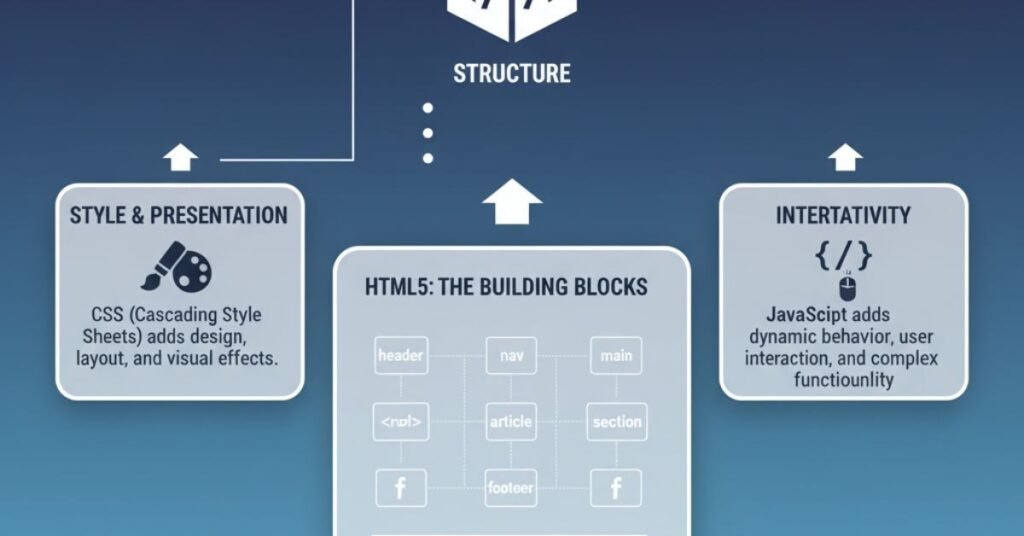
HTML is the backbone of the web. Every page you open, from Google to YouTube, starts with an HTML file. Think of it like the skeleton of a human body. Just as bones hold everything in place, HTML holds the text, images, and links of a website.
Browsers like Chrome or Firefox read HTML and show it to you as a web page. Without it, your browser would not know how to display anything. Even modern apps and advanced frameworks still rely on HTML in the end.
Key Features of HTML
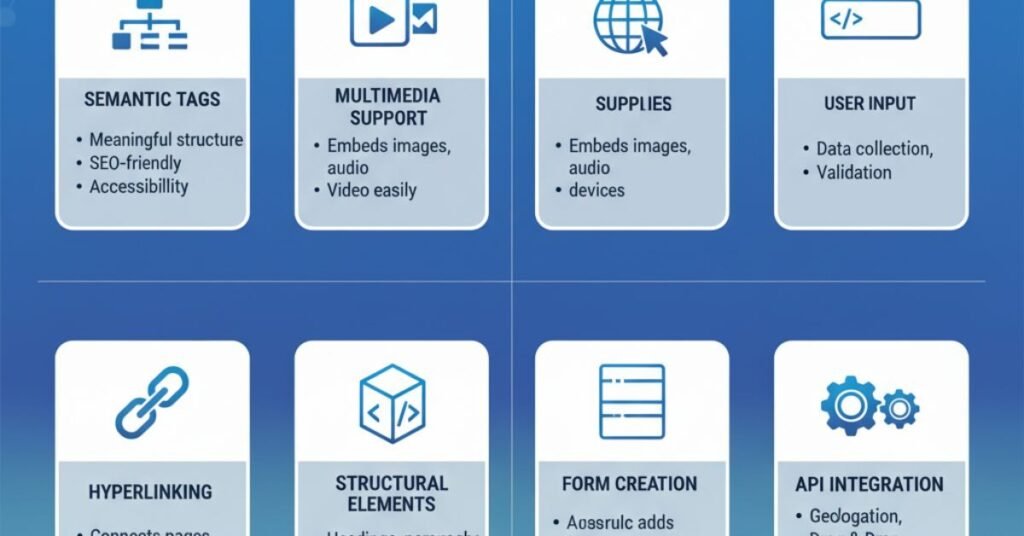
The beauty of HTML is in its features. It allows you to add text, images, audio, and even video.. It lets you create forms where users can type information. It also provides links that connect one page to another. This is why the internet is called the World Wide Web.
Another key feature is semantic HTML. These are tags like <header>, <main>, <article>, and <footer>. They give meaning to content. Search engines and screen readers use them to understand the page better. This helps both SEO and accessibility.
Learn More : Why CSS Is Important For Websites
Role of HTML in Web Development
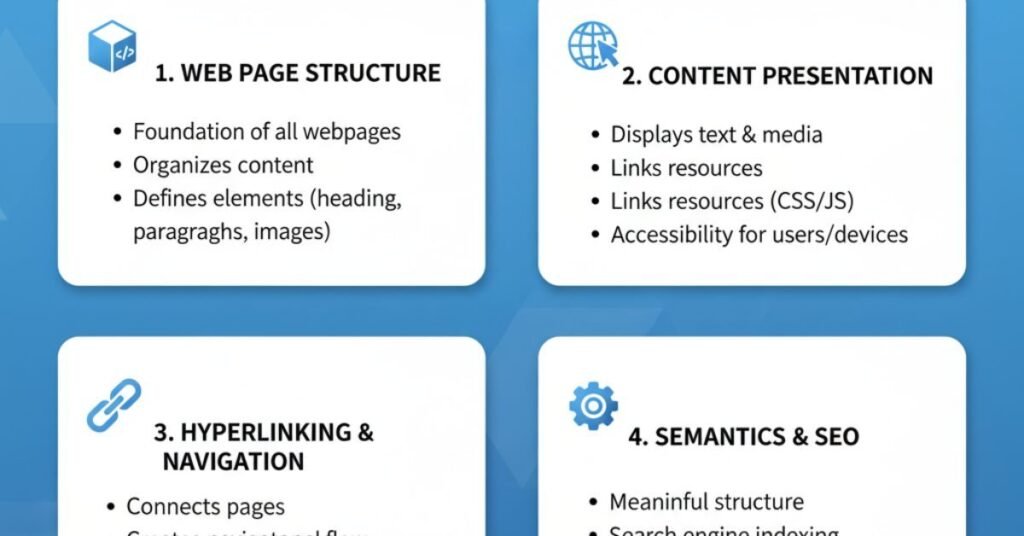
HTML works with two friends: CSS and JavaScript. HTML creates the content. CSS adds style and colors. JavaScript adds movement and actions For example, when you fill out a form, HTML makes the form, CSS styles it, and JavaScript checks if your email is correct.
Every developer must learn HTML first. Even if you later use frameworks like React or Angular, they all end up producing HTML. It is the base language of the web, and nothing replaces it.
Roles of HTML, CSS, and JavaScript
| Technology | Role in Web Development | Example |
| HTML | Structure and content | Adding text and forms |
| CSS | Styling and design | Changing colors and layouts |
| JavaScript | Interactivity and logic | Form validation and animations |
Importance for Developers
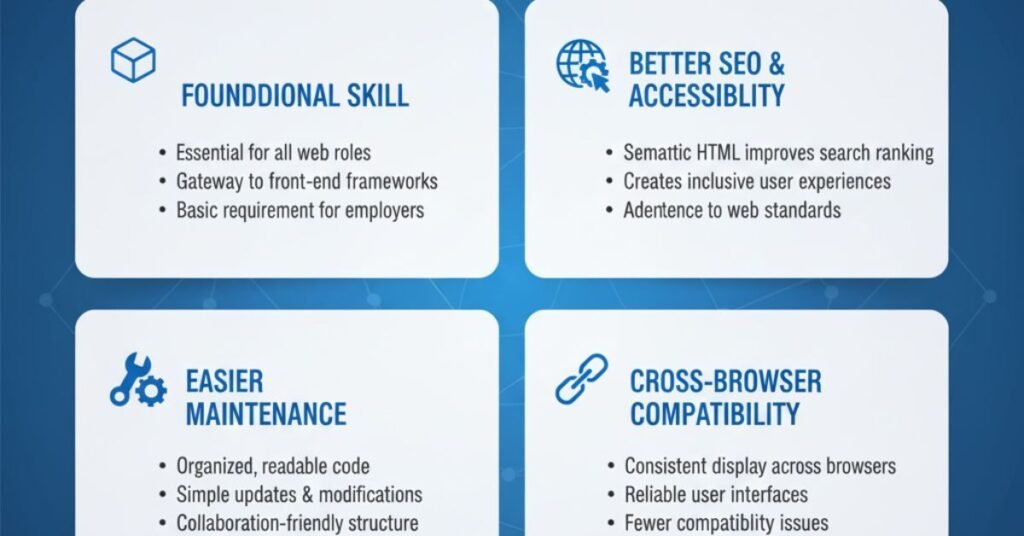
For developers, HTML is the first step. It is simple and easy to learn.. You can start coding a basic page within minutes. This gives confidence to beginners.
Even senior developers use HTML daily. They use it to make SEO-friendly pages, build landing pages, and create templates. Big companies also expect developers to know HTML well. It is a universal skill in web development.
Practical Applications of HTML
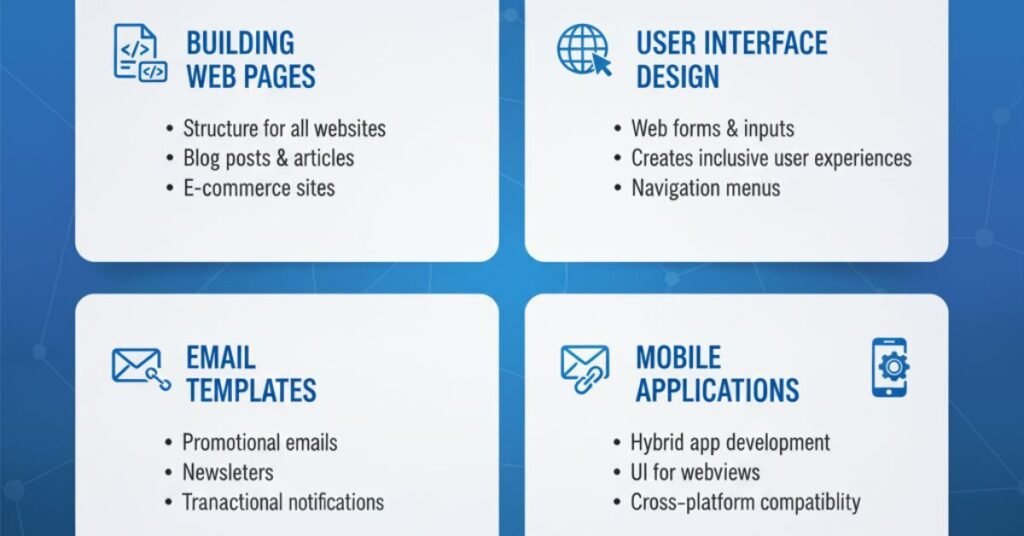
HTML has endless uses in daily web work. You use it to build websites, blogs, and e-commerce stores. It also powers responsive layouts that work on both mobile and desktop.
Another use is in email templates. Every marketing email you get is written in HTML. Companies also use it for forms, product listings, and documentation. Accessibility is another important part. With tags like alt attributes and headings, HTML makes websites readable for all users, even those using screen readers.
Practical Uses of HTML
| Application | Example | Benefit |
| Websites | Blogs, stores | Structure and design |
| Emails | Marketing newsletters | Reach customers easily |
| Forms | Contact, login, checkout | Collect user data |
| Documents | Online guides | Easy to share and read |
Evolution and Future of HTML

HTML has grown a lot. In the past, HTML4 was basic and limited. Then came HTML5, which changed the game. It added video, audio, canvas for graphics, and geolocation. Developers no longer need extra plugins to show videos or animations.
The future of HTML is even brighter. It works with Progressive Web Apps (PWAs) and supports modern browsers. As web standards improve, HTML will keep evolving. New tags and attributes will make it even more powerful and secure.
you will like: Difference Between HTML and CSS
Case Study: HTML in E-commerce
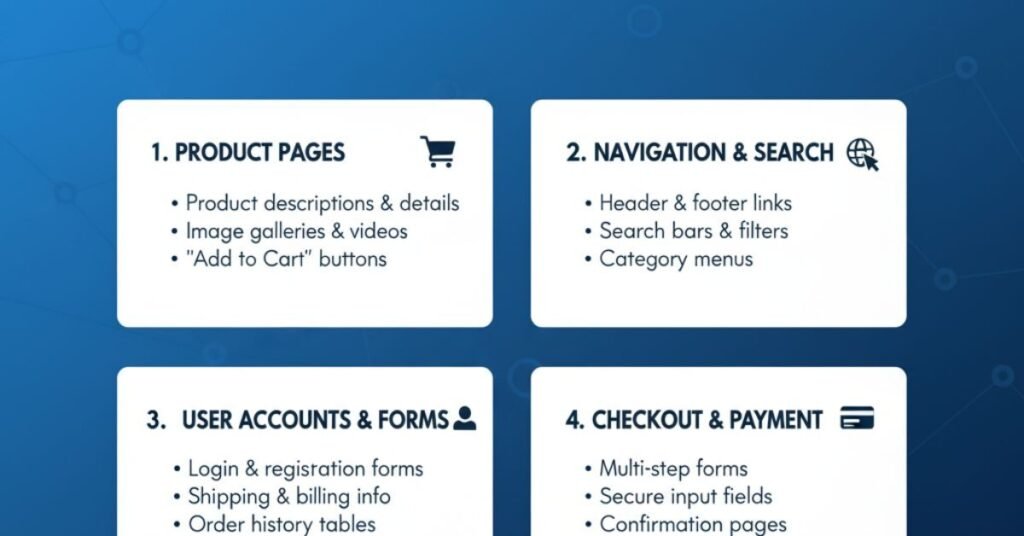
Think of an online store like Amazon. Every product page is built with HTML. It shows the product name, price, description, and image.. HTML tags make all of this possible. Without it, there would be no structure for buyers to see.
SEO also plays a role. Product pages use proper headings, meta tags, and alt text. This helps them rank higher on Google. A small business can grow just by mastering HTML basics. This case shows why HTML is vital for business success.
HTML in E-commerce Pages
| Page Element | HTML Tag Used | Purpose |
| Product Title | <h1> | Helps with SEO |
| Product Image | <img> | Displays visuals |
| Description | <p> | Explains product details |
| Add to Cart | <button> | User interaction |
FAQ”s
Is HTML still important in 2025?
Yes. Even modern apps and frameworks rely on HTML as the base structure.
Can you build a website with only HTML?
Yes, but it will look plain. You need CSS for style and JavaScript for interactivity.
Is HTML a programming language?
No. It is a markup language that structures content, not a programming language.
Does HTML affect SEO?
Yes. Clean HTML with proper headings, meta tags, and alt text improves rankings.
How hard is it to learn HTML?
It is very easy. Beginners can learn the basics in just a few hours.
Conclusion
Why HTML is Important in Web Development is clear. It is the backbone of every site and app. Without it, there is no structure, no design, and no content.. HTML is simple yet powerful. It works with CSS and JavaScript to create amazing websites.
As the web grows, HTML grows with it.From blogs to global e-commerce sites, it remains the core. If you want to build a career in web development, start with HTML. Master it, and you will have the foundation for every other skill.
Meta Description
Discover why HTML is important in web development. Learn its role, features, SEO impact, and future in simple and clear language




